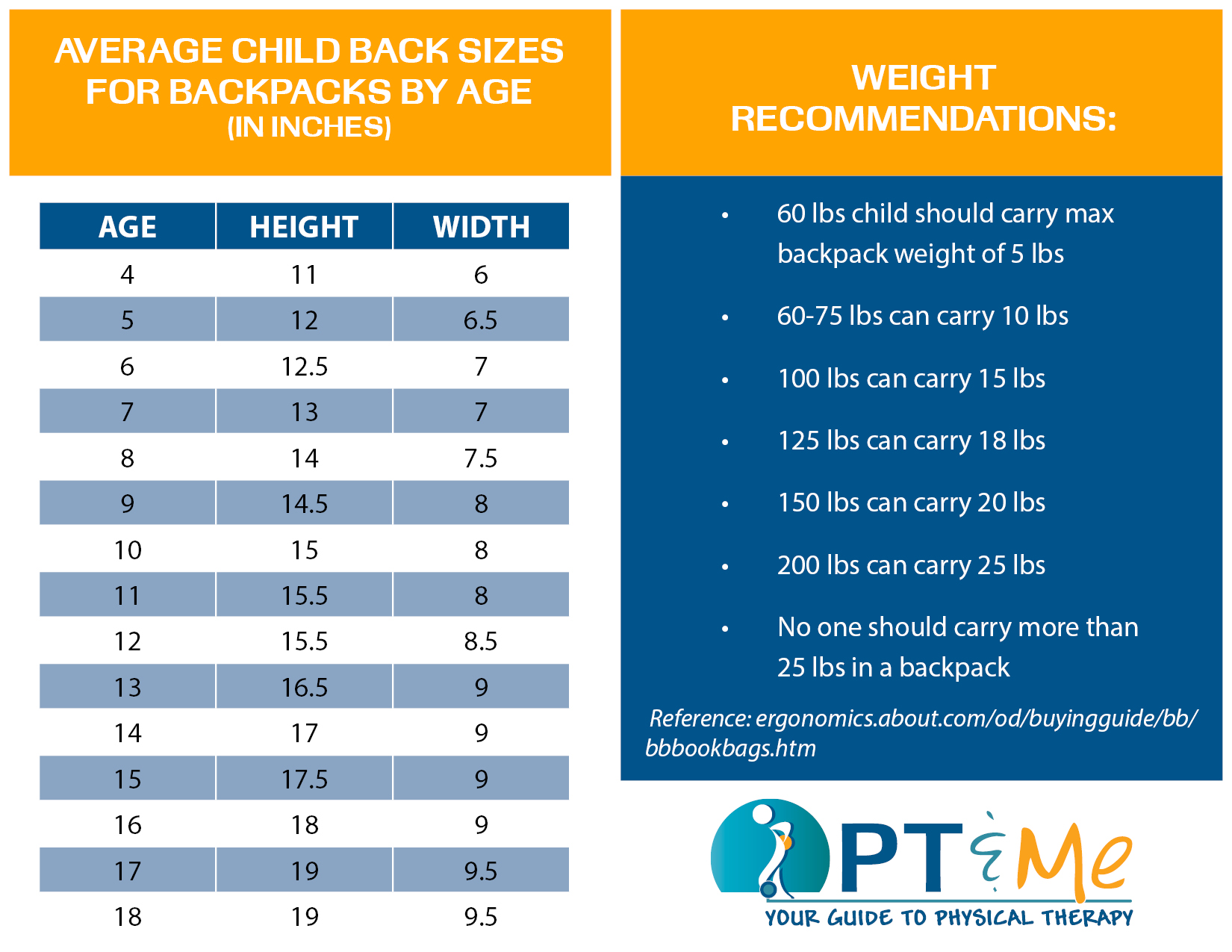
Understanding Backpack Safety
As summer fades and the back-to-school season approaches, it’s time to start thinking about school supplies and, most importantly, your child’s backpack.
Ensuring your child’s backpack is safe is crucial to prevent unnecessary back pain and long-term health issues.
Continue below for backpack safety tips to make sure your kids don’t have any unnecessary back pain this year.
In this guide, we’ll explore:
- What is backpack safety
- 6 backpack safety tips
- How to recognize and address back pain
What is Backpack Safety?
Backpack safety refers to the proper selection, packing, and carrying of backpacks to minimize strain on a child’s back and shoulders.
When done correctly, it helps prevent discomfort and more serious issues like muscle strains or even scoliosis.
Backpack safety is essential for several reasons:
- Preventing Back Pain: A poorly fitted or overly heavy backpack can cause back pain and strain. This can be particularly problematic for children, whose bodies are still developing.
- Avoiding Long-Term Health Issues: Regularly carrying a heavy or improperly worn backpack can lead to more serious health problems over time, such as spinal misalignment or chronic musculoskeletal issues.
- Promoting Good Posture: Using a backpack correctly helps maintain proper posture, reducing the risk of developing postural problems.
- Ensuring Comfort and Safety: A well-designed backpack with padded straps and adjustable features enhances comfort and reduces the risk of shoulder or neck injuries.
As parents, understanding the fundamentals of backpack safety can make a significant difference in your child’s health and comfort throughout the school year.
6 Key Backpack Safety Tips for Parents
Here are the top backpack safety tips every parent should know to ensure their child carries their school gear safely and comfortably.
1) Choosing the Right Size Backpack
One of the most important aspects of backpack safety is selecting the correct size.
A backpack that’s too large or too small can cause imbalance and strain.
When shopping for a backpack, keep the following size tips in mind:
Proper Size Guidelines:
- Should Not Extend Above Shoulders: The top of the backpack should not rise above your child’s shoulders. A high-riding backpack can throw off their balance and increase strain on the neck and shoulders.
- Rest In Contour Of Low Back: The bottom of the backpack should sit comfortably in the contour of the lower back. This positioning helps distribute the weight evenly.
- Should Sit Evenly In Middle Of Back: Ensure the backpack rests evenly in the middle of the back, not tilted to one side. This even distribution of weight reduces strain on one side of the body.
2) Ensuring a Proper Fit
A well-fitted backpack is key to avoiding unnecessary pressure on your child’s shoulders and back.
Here’s how you can ensure a perfect fit:
How to Fit a Backpack Correctly:
- Shoulder Straps: The shoulder straps should rest comfortably on the shoulders and underarms, allowing free movement of the arms. Adjust the straps so that the backpack fits snugly without being too tight.
- Hip and Waist Straps: Tighten the hip and waist straps to keep the pack close to your child’s body. This helps in stabilizing the load and reducing the impact on the spine.
- Padded Straps: Opt for backpacks with padded straps, as they help distribute the pressure evenly across the shoulders, minimizing discomfort.

3) Managing the Weight of the Backpack
The weight of the backpack is a critical factor in preventing back injuries.
Overloading a backpack can lead to significant strain on your child’s
Weight of Pack: Never exceed 15% of body weight to avoid excess loads on the spine
- Ex: If your child weighs 60 pounds, their backpack should not be heavier than 9 pounds. This helps avoid excessive loads on their developing spine.
 4) Teaching Proper Lifting Techniques
4) Teaching Proper Lifting Techniques
How your child lifts their backpack is just as important as its weight and fit.
Improper lifting can cause back injuries and muscle strains.
Lifting Safely:
- Bend the Knees: Teach your child to bend their knees and squat down to pick up the backpack. This technique prevents undue stress on the lower back.
- Lift Close to the Body: The backpack should be lifted close to the body, first to waist level, and then up to the shoulders. This method reduces the strain on the back and ensures a safe lift.
5) The Right Way to Carry a Backpack
Even with the right backpack and fit, how your child carries their backpack throughout the day makes a big difference in their spinal health.
Carrying Tips:
- Use Both Shoulder Straps: Encourage your child to use both shoulder straps at all times. Carrying the backpack on one shoulder can lead to uneven spinal forces and potential muscle imbalances.
- Keep the Pack Centered: The backpack should be centered on the back. Spinal forces increase when the backpack is carried too far from the body’s center, leading to potential injury.
6) Maintaining Good Posture
Good posture plays a crucial role in backpack safety.
Poor posture while carrying a backpack can cause muscle imbalances, leading to back pain and potentially more serious conditions like functional scoliosis.
Posture Tips:
- Avoid Slouching: Encourage your child to stand up straight and avoid slouching while carrying their backpack. Slouching can lead to uneven stresses on the spine, increasing the risk of pain and functional scoliosis.
Recognizing and Addressing Back Pain
If your child does start to complain of constant back pain, talk to your pediatrician and make sure that it isn’t a more serious issue such as scoliosis.
Understanding Scoliosis
Scoliosis is a medical condition in which the spine is curved side to side and is often rotated to one side or the other.
It can occur at birth or develop over time.
Common causes include:
- Leg length discrepancies,
- growth patterns, or
- underlying conditions like cerebral palsy.
While it can be present at birth, it often develops during growth spurts in adolescence, which is known as Adolescent Idiopathic Scoliosis.
What is Adolescent Idiopathic Scoliosis?
Adolescent Idiopathic Scoliosis is the most common type of scoliosis.
This form of scoliosis has no known cause, hence the term “idiopathic,” and is more common during the teenage years as the body undergoes significant growth spurts.
- It usually develops between the ages of 10 and 15, during periods of rapid growth.
- There are two kinds of curves, single or “C” curves and double or “S” curves. “C” curves are slightly more common than “S” curves.
- The curve can occur in the upper back (thoracic), lower back (lumbar), or a combination of both.
Strength for necessary upright postures of daily life is essential.
Sometimes it cannot be maintained due to a “growth spurt,” fatigue from daily postural demands or poor postural habits common among adolescents.
Seeking Professional Help
If you suspect scoliosis or other back issues, consult your pediatrician.
A physical therapist may also be recommended to analyze your child’s posture and habits.
- A physical therapist can analyze a patient’s history, habits and activities which may be contributing to their curvature and symptoms.
- Common findings include leg length discrepancy causing tightness and muscle imbalance, leading the lumbar spine to compensate with side bending and rotation.
- Treatment often includes muscular re-education, manual therapies, and exercises to restore proper posture and balance.
Did you know you have Direct Access* to Physical Therapy? No referral, no problem!
The Jackson Clinics serves 18 locations throughout Northern Virginia.
Find one near you: https://thejacksonclinics.com/locations/

 4) Teaching Proper Lifting Techniques
4) Teaching Proper Lifting Techniques















